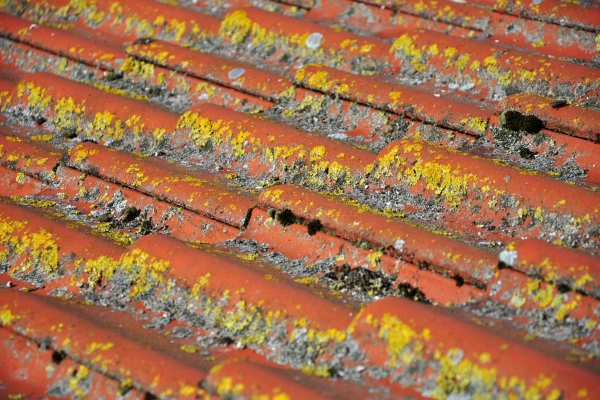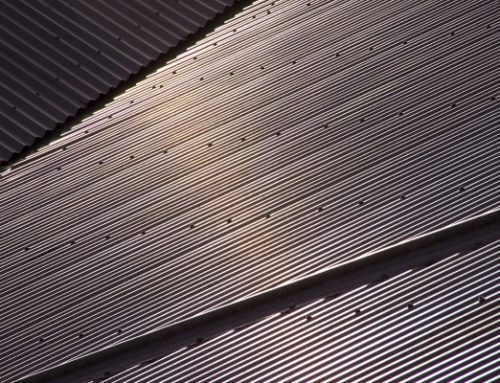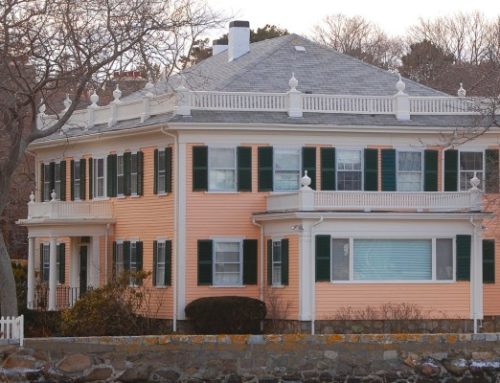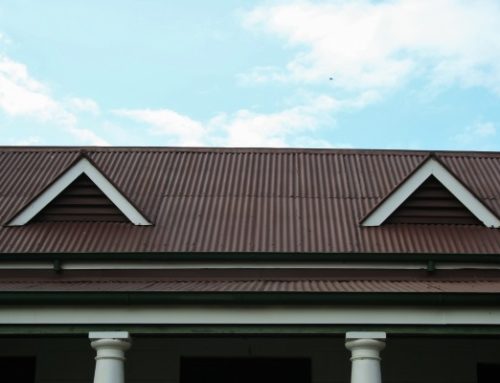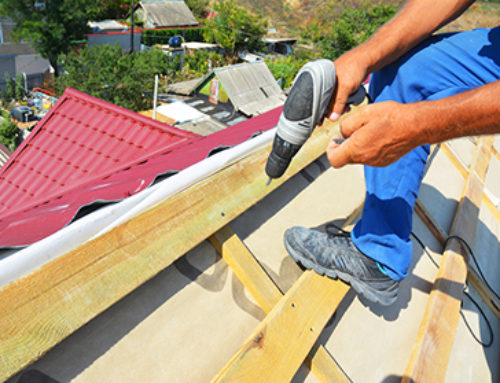From the curb and your lawn, the black algae roofs streaks are quite creepy and disgusting to look at. However, if you can muster the strength, is it possible to save money by cleaning up black algae roofs DIY? The short answer is yes, you definitely can with some exceptions.
You can remove black algae, but you can expect them to return within the change of seasons. This everlasting roof problem has several manufactured solutions, which will not require any manual cleaning. However, how did they come about in the first place? Roof Revivers has an excellent post about this.
What are Those Ugly Black Streaks on My Roof?
Although these dark spots and ugly black streaks on your roof may look like dirt, mildew, soot or mold, what they really are is algae. The most common type is known as gloeocapsa magma—also known as blue green algae.
This algae growth usually begins as small spots and then eventually becomes visible streaks. By the time this algae is noticed by the homeowner, it has usually been on the roof at least two or more months.
how to get rid of black streaks on your roofWhy does this algae appear to be black? Gloeocapsa has the ability to form a protective darkly pigmented outer coating that shields the algae from damaging UV rays. This is what makes those unattractive black streaks on your roof!
Although algae can be found on all types of roofing, it tends to be most common on asphalt shingles.
Why do Shingles Get Algae?
Algae spores are airborne. They can be carried by wind, animals and even on your clothing. Because these spores are airborne, they can quickly spread from rooftop to rooftop in a neighborhood. This is also true for townhomes, condos and apartment complexes.
Why does roof algae seem to be more common today that it was 20 years ago? Traditionally, asphalt shingles got their name from being made up of mainly asphalt—an oil based product—and felt material. (Continued)
They’re disgusting and terrible all right, but maybe you can just leave them to live on your roof. After all, plants cannot damage asphalt shingles and roofing materials if they can even outlast the strongest hailstorms right? Unfortunately, algae, moss, and other forms of organic life or matter living on roofs will create massive damage to it in the future.
Roofing Annex has a great post that demonstrates the gradual decay in material dependence and performance because of black algae roofs. Check out their helpful post below.
The Dangers of Black Algae Roofs Stains and Other Organic Matter on Your Roof
Having mold, mildew, moss, or algae growing on your roof is more than just an unsightly nuisance that brings down the value of your property. Each can cause roof rot and lead to health problems for people living in the home or residential complex, or for workers in a commercial building. Let’s take a closer look at each of these culprits.
Algae: They like dampness and shade, so algae spores can grow on wood shingles or shakes and asphalt shingles that don’t get much sunlight. Because roof algae retain moisture, they can cause shingles to deteriorate and eventually rot completely. Algae also like the humid conditions in gutters and downspouts and can grow there as well. Algae are recognizable by their black-green coloring.
Moss: It likes moisture, so it typically grows on moist wood shingles or shakes. As the moss grows, it contains even more moisture, all resting on the surface of your roof. Eventually, your roofing materials begin to rot, compromising the integrity of your roof.
Mold: Appearing as fuzzy black, brown, or green spots or slimy film, mold is attracted to damp or humid environments and spreads quickly. Black mold is the most dangerous type of mold. It lives on wood, paper and drywall, so if the problem is not addressed quickly, it could weaken the entire structure of a home or building. Easily recognizable by its dark black color and its strong musty smell, black mold is toxic and can cause serious respiratory illnesses in occupants of the home or building.
Mildew: Recognized by its powdery consistency, mildew typically grows in warm, humid and rainy environments. It is most commonly found on roofs with poor drainage or where trees hang over the roof line. Green, black, red, or pink in color, mildew is a fast spreader. (Read More)
Now, you’ll want to know how you can remove black algae roofs stains on your own. Most cleaning equipment and products you need you can find at home. Today’s Homeowner has an excellent guide on performing black algae roofs stains by yourself, so take time to read the post below.
How to Remove Black Algae Roofs Stains By Yourself
Algae stains can be removed by cleaning, though they usually return. While an occasional cleaning might not harm your roof, repeated use of harsh chemicals, or the erosive effects of pressure washing, can damage or shorten the life of asphalt shingles.There are several products on the market specifically designed to remove algae stains from roofs, such as Wet & Forget Outdoor. A mixture of trisodium phosphate (TSP), bleach, and water will also remove stains. Oxygen bleach lightens stains as well and is less harmful to the environment, but it doesn’t produce as immediate or dramatic an effect as chlorine bleach.
Here’s what you’ll need to clean your roof:
- Cleaner
- Pump sprayer
- Garden hose with spray nozzle
- Safety glasses or goggles
- Rubber gloves
- Safety rope
- Old clothes
- Slip resistant shoes
- Ladder
Safety
Working on a roof can be dangerous, and it becomes even more hazardous when wet, so be sure to take adequate safety precautions. Avoid working on steep roofs, wear slip resistant shoes, and use a safety rope where needed. When working with harsh chemicals, be sure to protect your skin and eyes.
Bleach can damage or kill other plants in addition to algae, so wet down any grass, shrubs, or other plants where runoff will occur before and after applying bleach. Covering bushes with plastic after wetting them down helps as well. (Read More)
While you can perform black algae roofs stains cleaning by yourself, keep in mind that you’ll possibly spend multiple weekends performing the cleaning. If you need help, you can definitely count on Clinton Township’s finest roofing contractors. Miller’s Home Improvement has been cleaning out black algae, moss, and mildew off roofing materials for decades. You can learn more about what we can do for you by calling now.


